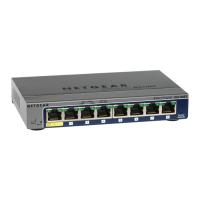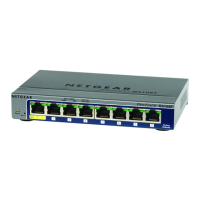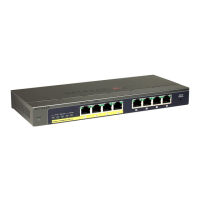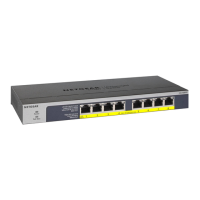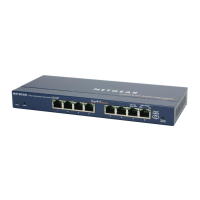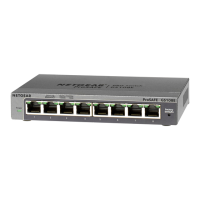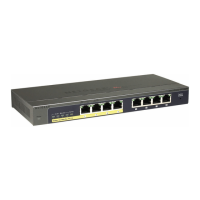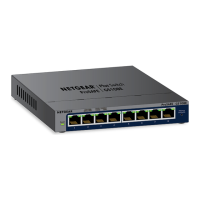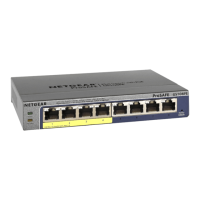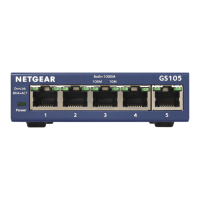8-Port Gigabit (PoE+) Ethernet Smart Managed Pro Switch with (2 SFP or 2 Copper Ports and)
Cloud Management
Configure System Information User Manual105
The System Information page displays.
6. Select System > SNMP > SNMP V1/V2 > Trap Configuration.
The Trap Configuration page displays.
7. In the Recipients IP field, enter the IPv4 address at which the SNMP traps from the switch
must be received.
8. From the Version menu, select the trap version to be used by the SNMP trap receiver.
• SNMPv1. The switch uses SNMPv1 to send traps to the receiver. The default setting
is SNMPv1.
• SNMPv2. The switch uses SNMPv2 to send traps to the receiver.
9. In the Community String field, specify the name of the SNMP community that includes
the SNMP management host and the SNMP agent on the device.
This name can be up to 16 characters and is case-sensitive.
10. From the Status menu, select Enable to send traps to the receiver or select Disable to
prevent the switch from sending traps to the receiver.
11. Click the Add button.
The receiver configuration is added.
Modify information about an existing SNMP trap recipient
To modify information about an existing SNMP trap recipient:
1. Connect your computer to the same network as the switch.
You can use a WiFi or wired connection to connect your computer to the network, or
connect directly to a switch that is off-network using an Ethernet cable.
2. Launch a web browser.
3. In the address field of your web browser, enter the IP address of the switch.
If you do not know the IP address of the switch, see Access the switch on-network and
connected to the Internet on page 19 or Access the switch off-network on page 30.
The login page displays.
If the NETGEAR Business page displays, see Register and access the switch with your
NETGEAR account on page 34.
4. Enter one of the following passwords:
• After registration, enter the local device password.
By default, the local device password is password.
• If you previously managed the switch through the Insight app or Cloud portal, enter
the Insight network password for the last Insight network location.
For information about the credentials, see Credentials for the local browser interface on
page 32.
5. Click the Login button.
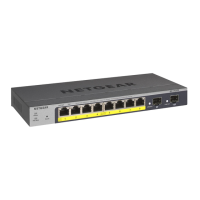
